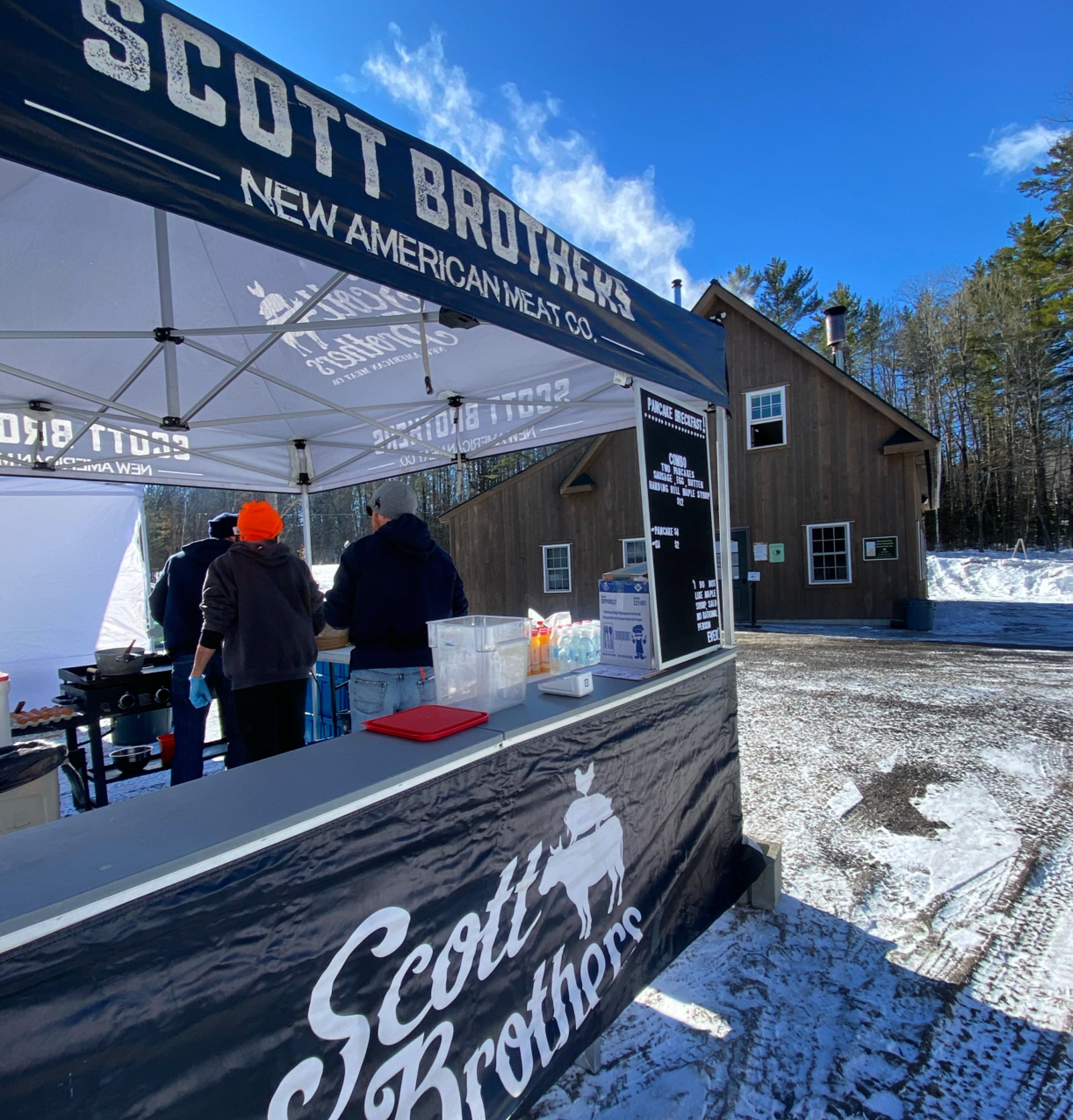2023 Maple Month Week 3
We made the maple syrup, and the people came…
A record Maple Weekend turnout is in the books! On Saturday alone, we can only guess that around 500 people passed through the sugarhouse on a stellar weather day. Maple cookies were devoured by noon, maple popcorn ran out shortly thereafter, and afternoon visitors enjoyed syrup drizzled over ice cream. On Sunday, mother nature didn’t cooperate quite as nicely, delivering 20 degree temperatures and windy conditions. We’ve got some die hard maple enthusiasts though! At 10am, we kicked off our first ever outdoor pancake breakfast… and it sold out by 11:15am. Yikes. Breakfast was a huge success, and we’re already scheming about next year. We’ll be sure to have the guys from Scott Brothers Kitchen back again to serve up their delicious food… always incorporating Harding Hill maple of course. All of this would not be possible without an incredible crew of HHF staff, family, and friends. We are so fortunate to have all of you supporting our passion for maple.
Maple weekend might be behind us, but the weather shows there is plenty of maple sugaring ahead. If things hold, we could be making syrup well into April. Will this be the longest ever maple season for HHF? We shall see.
We’ve got two weekends of open sugarhouse days left for the season! Open hours for this weekend are Saturday, March 25th and Sunday March 26th - 10am till 4:30pm.
maple tap count
7,000 Taps
First Boil - February 13, 2023
Total Sap Collected so far…
101,410 Gallons
1.88% Sugar Average
47 Gal sap needed for 1 Gal syrup
Maple Syrup Total as of 3/23
1,889 Gallons
Maple Grades
Amber Rich, Golden Delicate
Last week, I gave an overview of our ‘sappy’ history and our four woods locations. I’ll continue this installment by explaining the processing of raw sap.
On a good weather day during maple season, we haul thousands of gallons of sap by truck to our sugarhouse in Sunapee. Once the sap is unloaded into stainless steel tanks and checked for sugar content (approximately 2% sugar), its time to start the processing end of the maple business. There are quite a few steps to get our 2% sugar sap to 67% sugar maple syrup.
In modern sugarmaking, we are lucky enough to have the reverse osmosis (RO) machine. This machine is solely responsibility for lower farmer stress levels due to increased sleep. In other words, we burn less firewood and spend less time in the sugarhouse to make the same gallon of maple syrup. The RO pushes raw sap through a series of membranes. During this process, water molecules are removed from sap leaving concentrated sap at anywhere from 10 to 20% sugar while retaining the natural minerals and nutrients from the tree. The byproduct is distilled water. We store the distilled water and re-use it to clean our equipment. The concentrated sap is pushed up into a stainless steel holding tank. From there, it slowly feeds into our evaporator and is controlled with a float valve.
Check back next week for the next installment explaining the evaporation process.
be healthy, support local, think maple
~Kelly Webb








